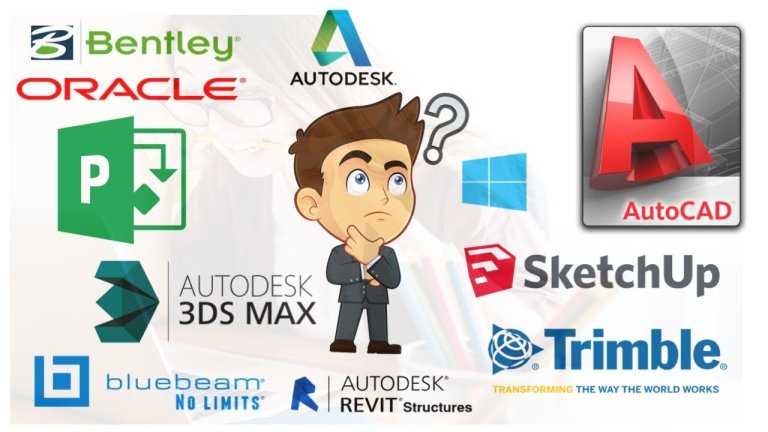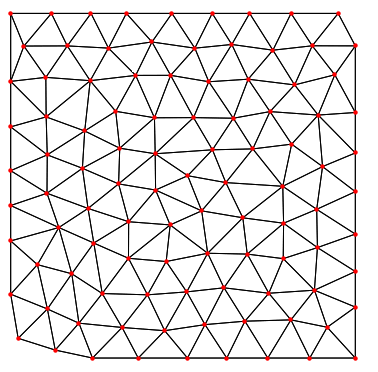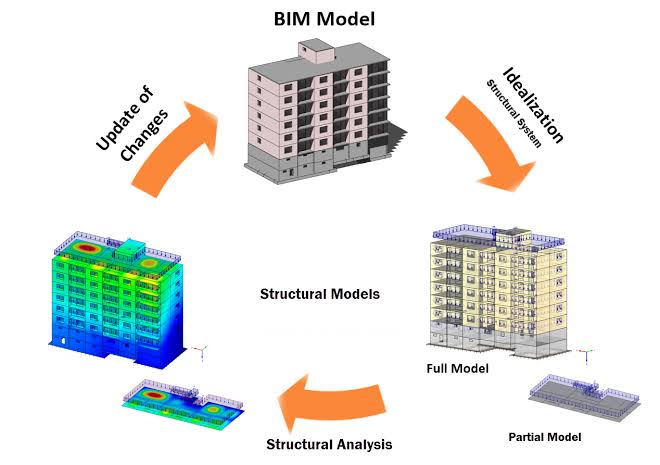This article highlights some of the factors affecting the choice of engineering software and things the structural engineer must look out for when selecting a certain software for use.

It is thought-provoking to search this blog for articles on engineering software package and swiftly be met with articles, with titles “Dangers of Software in Engineering, Overreliance in Software Packages” and so on and on. The summary of these articles would vary from warnings that software is to be used with caution to engineering software being just as good as the engineer who drives them, and the need to combat overreliance through the application of fast, approximate methods of hand calculations.
For the umpteenth time, ‘Structures Centre‘ is not against the use of engineering software but its excessive use, to be specific, the reluctance by many engineers to interrogate software outputs. This blog actually believes engineering software have being of immense contribution to the profession and as one writer would even put it, “to ask structural engineers to drop engineering software and revert back to full hand calculations would be just as bad as asking a fire fighter to throw away his tools and fight fire barehanded.” However, the responsible use of engineering software must always be advised.
The Internet space is often littered with questions, perhaps from young, aspiring structural engineers finding answers on what software to learn and which is the best? It doesn’t take much effort to realize that the answers usually offered for this question is subjective. There is often no well founded metric used to access these software packages, many times it comes down to preferences. There is no ‘best’ anywhere, there is only the ‘right’ software. Perhaps, if we could even find a “one size that fits all” structural engineering software, then that would be a significant differentiator and we could consider having the conversation.
For context, this writer used to be an engineering software “freak” who uses almost all mainstream structural engineering software around, always fascinated by all the latest software hitting the market and would easily fall to answering this question with a definite answer whenever it was posed. But something happened.
In May 2022, he was saddled with quickly automating the design of a three-cell box culvert. He searched his software archives for hours, especially those software he had speciously recommended to colleagues, were the best, for “Design of 3-Cell Box Culvert” but to no avail. Long story short, he had to pay for a nameless software package which could undertake the task after going through the stress of actually finding one. Only then did he realize there was actually no best software but the right software, each having their capabilities and personal limitations.
It is fascinating to actually see how the perception of what structural engineering software packages now is from what it used to be. Initially these packages were divided into three major groups: structural analysis software; structural design software, and computer- aided design CAD for the production of drawings. These three groups still exist today, but are now often merged into one engineering software. Notwithstanding, there are still many software that offers only one or two of the three functions.
Today, the spectrum of structural engineering software is very wide. There are a lot more information available on reviews, however much is rarely said on how these software compare with others. Without this information, it is the case that structural engineers are unable to make very informed decisions as to which software would best fit for their engineering practice, since it would be very costly and time consuming to test and evaluate every one of them.
The next section will highlight the factors that should influence a structural engineer in the selection of a software package. These factors will be classified into the following; Technical Selection factors and General selection factors.
Technical Selection Factors
Technical selection factors considers the technical capabilities of the software as well as its limitations. This would include type of structure; meshing; analysis type; and
element design.

Structure Type
A structural engineer must consider the type of structure he wishes to design. There are always limitations. Many structural systems (e.g., cable nets, steel shells, complex-geometry reinforced-concrete shells, post-tensioned bridge decks) can only be properly modelled, analyzed and designed by a small range of structural analysis packages. Hence, for engineers with the ambition to design specialized structures, they must be aware, that the choice of software is much smaller. In fact, it is often the case that this specialized analysis & design packages cannot handle more common structural system, hence the need for the engineer to use two or more software for one project.
Meshing
Meshing is another important technical selection factor. The structural engineer must reflect on the complexity of the finite element model- it is a big differentiator. Most finite element powered software seem to be able to handle 2D meshing very well. However, for many of these software, their finite element cannot be used for non-linear analysis, shell structures, members subjected to tension only and so on. Hence, it is important for the engineer to be aware of this limitation when selecting the software.

Analysis Type
The structural engineer must also answer the question of the type of analysis he wishes to undertake. If he’s restricted to first order analysis, then most structural analysis packages will be able to handle it. However, for an engineer who designs very slender steel structures, for example, guyed towers, he would most likely be required to do a full second order, P-delta or non-linear analysis, he must be fully aware of the limitations of the software he’s using and to find out if his preferred software in fact has the capability.
Another example would be an engineer designing a composite steel building. A big differentiator could be staged analysis. Many packages don’t allow for this, some allow linear static analysis of construction stages with temporary support conditions, and only a very small number allows for time based non-linear analysis of construction stages.
Other special functions that may be required are soil–structure interaction, rail track structure interaction, and form-finding, which again are only covered by a minority of packages3.
Element Design
Element design is no longer much of a problem for the structural engineer. As said in the last section, structural design software started as a separate group from structural analysis. Today, whilst software that does only analysis are still many, you’re unlikely, to find several software that does design only. The reason is that, whilst structural design software can be very useful for one-off checks, they are rarely useful when undertaking the design of a large number of structural elements having a large number of loading combinations. It wouldn’t suggest efficiency to start checking each element one by one and each loading combinations one after the other, hence the trend has been to merge and automate the process.
Today, a vast majority of analysis software packages now does element design for the three mainstream structural materials: Structural Steel, Reinforced Concrete and Structural Timber. Even where specialized elements are to be designed, the analysis software tend to have a good link with the design package, such that the specialized design package is able to import the design data to perform the design checks.
General Selection Factors
Accreditation
In some cases, certain jurisdictions will require that the engineering software intended for use is accredited/ approved for use or at least more commonly used. It is therefore pertinent that engineers working in a region should find out if there is this requirement before selecting a software package. In other instances, accreditation may even be part of an “Employer requirement” for a project, the engineer should find out.
Cost
Software requires licenses – sometimes multiple licenses, they also require maintenance, and training, thus cost is equally an important criterion in the selection of software packages. It is however, very important that engineers don’t just think only in the direction of cost implication but also the potential benefits and savings the software promises.
User Interface & Functionality
Although not the most important factor, a simple, easy to use and intuitive user Interface saves time and consequently improve productivity and efficiency.
Future Potential
In selecting a software package, a structural engineer should find it worthwhile to check software manufacturer published documents for their future development plans, if not for anything to ensure that the cost implication on training is actually worth it and also to be sure they align with his long-term goals.
BIM Integration
It is no news that BIM integration has gained a lot of traction in the AEC industry. One major reason for this is due to the reduction in the time allowed for designs and construction stages of project. The reduced time available means that architects, engineers and all other members of the project team need to make coordination happen at a much faster rate than it would otherwise have been. Thus, a structural engineer working on such projects where BIM is used would require a software package with BIM Integration capability.

Interoperability
Interoperability within the context of discussion would be the ability of a software to exchange and make use of information from other software packages. For example, the final part of the design workflow is production of the calculation reports. The majority of analysis and element design packages support automated generation of a calculation report; however, only a few maintain a link with the word processing software (e.g., Word) such that any changes in the analysis model (e.g., the analysis results) are automatically reflected in the calculation report which has already been exported.
Production of the calculation report can often be time consuming; therefore, any functionality supported by the structural analysis/design software which makes this process more efficient can be an important differentiator in the software selection process.
Conclusion
For specialist designers, specializing in the design of one particular structure type, there might be a software that is be able cater for all their requirement. However, as the reader might have already found out, there is no “one size that fits all” solution, this is true especially for larger practices due to their wide range of different projects, with different levels of complexity, on different continents, using a combination of different materials, etc.
“We cannot have the best software; we can only have the right software”
Sources & Citation
- Bartek R., (2016) ‘How to chooses the right structural engineering software’, The Structural Engineer, 96 (3), pp. 19–22
- Brotton D.M. (1958) ‘The use of electronic digital computers in structural engineering’, The Structural Engineer, 36 (9), pp. 302–309
- Dobson R. (2000) ‘Powerful analysis software needs skilled users’, The Structural Engineer, 78 (12), pp. 11–13
Thank You!